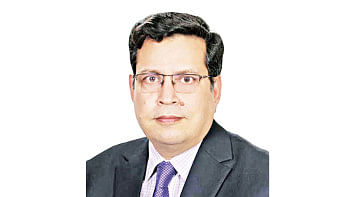Nine reasons for Rana Plaza collapse
It was on April 23 that Sohel Rana, the local administration officers, municipality authorities, upazila nirbahi officer and few others gathered to say a special prayer for Rana Plaza, that it holds up for the next 100 years.
Their wish, after all, was not unreasonable: a local engineer had assured Rana that the building was solid enough to stand for a very long time, despite a big crack surfacing that day, near a pillar on the third floor.
Hearing the news of the crack, the Bangladesh Garment Manufacturers and Exporters Association (BGMEA) summoned an engineer to the site the following morning to evaluate the state of the building.
“Our engineer had reached Rana Plaza a few minutes before 9:30am, only to witness the building cave in,” said SM Mannan Kochi, a vice-president of BGMEA.
With it, went 1,132 lives, the health of thousands and the reputation of an industry contesting to cement the top spot globally.
Following the catastrophe on April 24, the garment sector's apex trade body formed a high-powered committee to investigate the matter.
The committee, headed by Kochi, interviewed over 100 people and identified nine specific reasons for the building's collapse, which were made public yesterday at a media briefing at the BGMEA headquarters.
To start off with, the nine-storey building was built on swampy land which had permission for six stories at most from Rajuk and Savar Municipality.
Furthermore, the building was erected using sub-standard materials, meaning it was not robust enough to put up with the heavy-weight generators, chillers and boilers placed on the rooftop.
For a construction of the ilk of Rana Plaza, the pillars needed a minimum pressure bearing capacity of 3,500 units per square inch (psi), but, it had just 2,300psi.
The huge stacks of raw materials and finished items and the housing of more than 3,500 workers at any one time on each of the 20,000 square feet wide floors, mounted the pressure on the weak foundations.
The final blow came on April 23, when due to load-shedding the six generators on the roof of the building started off. They created massive trembles, which spread the crack on to other areas of the building.
“We do not want to call the Rana Plaza collapse an act of murder. It was an accident,” said Atiqul Islam, president of BGMEA.
He, however, left it to the jurisdiction to establish if it was a mass murder or accident.
The committee's report, which was prepared with assistance from Bangladesh University of Engineering and Technology, nevertheless, called for penalty for Rana, the building's engineers, the owners and mid-level managers of the five garment factories housed in the building.
Islam also said the BGMEA will seek help from the Spanish mission in Dhaka to trace out the owner of Phantom Garment, David Mayor, who has been absconding since the incident.
“The other owners are now in police custody -- David cannot be spared from it.”

 For all latest news, follow The Daily Star's Google News channel.
For all latest news, follow The Daily Star's Google News channel. 



Comments